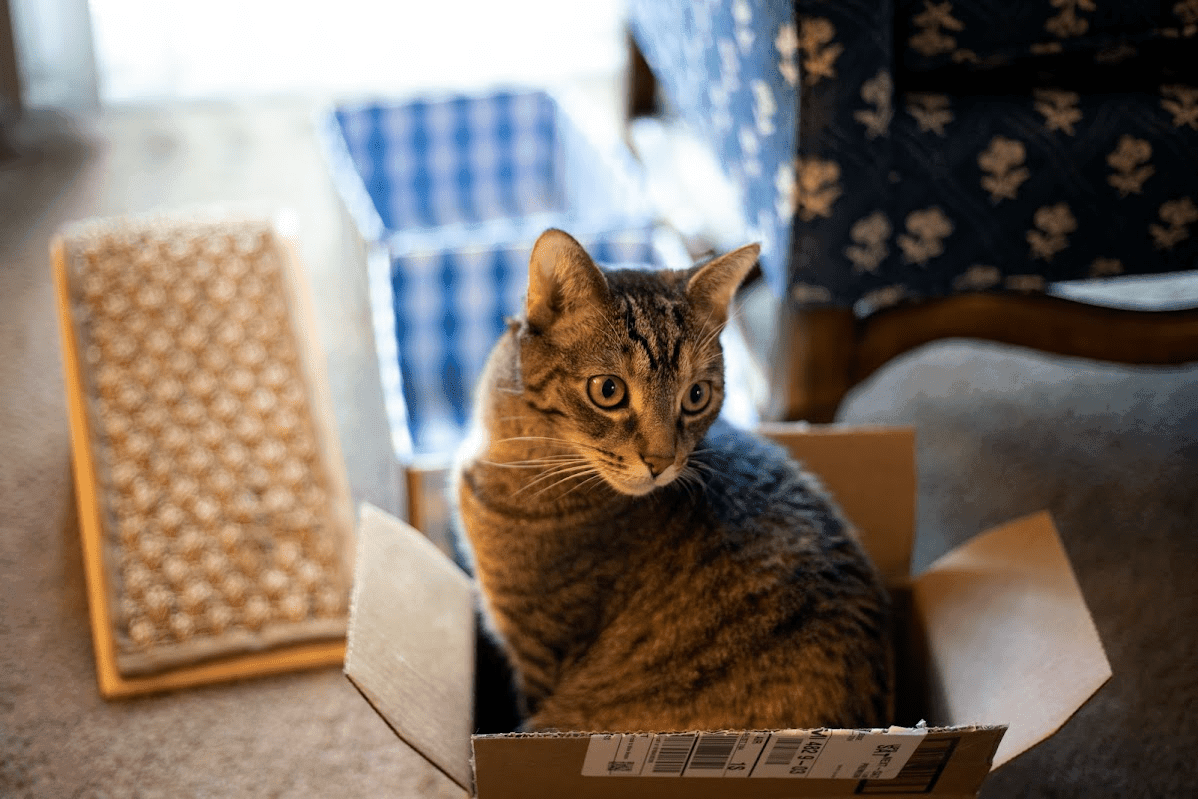SETTLING IN A NEW CAT

Bringing home a new cat is an exciting time for you and your family, it can be an overwhelming time for the cat or kitten, so here are some quick tips for setting up for success and avoiding problems down the track.
Safety
Before bringing the cat or kitten home – think kitten safety. Look to see if there are exposed power cords behind furniture, or hanging things on blinds that can become tangled. Look at your elevated surfaces; it might be a good idea to make a few accessible to the cat, so they are not climbing on every surface. Look for hiding places where the cat may go if they are overwhelmed, block off most of these (i.e. behind/beside the fridge) but leave the ones you can access.
A Safe Room
Choose a room that will be the cat’s space initially, the cat will be confined in until they are used to your home, and then it will be its base for some time until they are fully acclimated to your home and lifestyle.
The Safe Room Should Contain:
Uncovered litter box (low sides for easy entry) with scoop able, unscented litter & litter scoop
Food bowl (a size that is proportional for your cat). No one likes to eat in their toilet so place this as far away as possible from the tray.
Separate water bowl (Cats rarely eat and drink in the same spot).
Scratching post (sisal covered - should allow the cat to fully extend) can be part of a cat tree (for climbing).
Soft grooming brush.
Safe toys for solo play AND Interactive play toys (e.g. fishing pole design).
Soft bed and hiding places (e.g. box on its side, cat tunnel, etc.)
Cat carrier (see the article on introducing a cat carrier).
Identification (microchip, ID tag, breakaway collar).
Treats for training (or you can use the cat/kitten’s food) & clicker (optional training tool).
Harness and leash (for outside exploration).
First Thing First
The first place your new cat/kitten sees will be this room, simply open the carrier, and take a book or magazine and sit quietly while the cat comes out at their own pace. This may take minutes or hours. Allow them to explore at their own pace and find the food, water and litter tray. If a kitten is exploring well take them to the litter tray and encourage them to dig (use the scoop to move the litter). If they use the tray or even if they just dig, reward as soon as they leave the tray. Some cats who have been in a shelter for a while may see the tray as a place of safety. This is OK; just give them time to adjust.


The Next Step
Try to spend time in the cat’s room letting them get used to you, playing with them and to start teaching them some handy behaviours. The cat’s room should contain things that appeal to all the cat’s senses, especially sound and smell. As they grow in confidence allow them to explore other parts of the home, always supervise. We don’t encourage cats to roam outdoors, the risks are too great, a secure enclosure is a better option, or allow your cat to explore on a harness and leash.
Top Behaviours to Teach
Response to name (so they come to you).
Get in your carrier (so they can go with you places without associating the carrier with the vet).
Target to a hand or stick (so you can get them on or off furniture as you need). Walk on a harness and leash (so they can explore outside and for extra safety during transit).
Tolerance of gentle handling (so anyone can pat them).
Go to your station (a place to sit and not get underfoot or on the bench).
Hi-five (for help with grooming and paw maintenance).
For more information or help with settling in or training please contact us.
